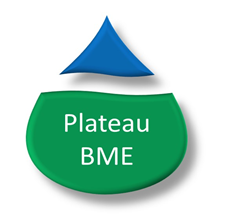
Environmental Molecular Biology
Production of bacteriophages
F-specific RNA and DNA phages, somatic coliphages, T4, P1, 187, K, … Production of other phages on demand. The purification level is adjustedaccording to requirements. Both infectious phages and their genomes can bequantified in productions.
Enumeration of infectious phages
Enumeration of infectious F-specific RNA phages and somatic coliphages in water samples (wastewater, surface water), mollusks (seawater: oysters and mussels / fresh water: Dreissena polymorpha), and leafy vegetables.
Genotyping of infectious bacteriophages
Genotyping of plaques of F-specific RNA phages (genotypes I to IV).
Quantification of viral genome
Use of RT-qPCR and digital RT-PCR methods in water samples, mollusks, and leafy vegetables.
Quantification of genome of human norovirus (genogroups I and II), F-specificRNA phages (genogroups I, II, III and IV), human adenovirus and genogroup 41.
Physical and chemical caracterisation of viral particles
Size measurements, determination of relative hydrophobicity and isoelectriccharge of viral particles (F-specific RNA phages, somatic coliphages).
Quantification of antibiotic resistance genes and mobile genetic elements in environmental matrices
Total DNA are extracted from environmental matrices (water, wastewater, sediments), ARGs and MGEs are then quantified using qPCR or dPCR. The 16S rRNA gene quantification is used for normalization to total bacterial biomass.
Screening of antibiotic molecules for their effects in sub-inhibitory doses on the expression of bacterial functions
Analysis of nucleotide sequences and identification of promoter sequences upstream genes of interest, construction of transcriptional fusions with luxCDABE or gfp reporter genes, screening of promoter response (induction/repression) by high sensitivity CCD camera luminescence/fluorescence imaging.
